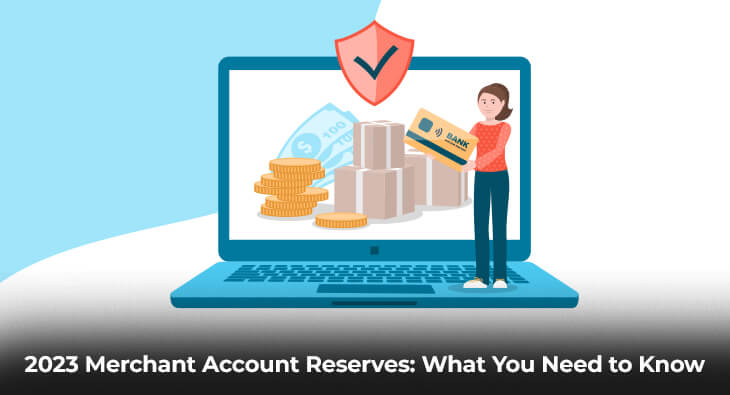Are you a business owner or entrepreneur who is planning for 2023? If so, it’s important to understand how merchant account reserves work. Merchant account reserves are funds that a payment processor or credit card company. May hold back from payments that you receive in order to protect against potential losses. This article will provide an overview of merchant account reserves. And what you need to know as you plan for 2023.
Why do merchant account reserves exist?
Merchant account reserves are a tool used by payment processing companies to manage risk and protect themselves from financial losses. The idea is that these reserves provide the processor with a financial cushion in case. There is an unexpected chargeback or a dispute. This helps to ensure that merchants can get paid promptly and efficiently. While also providing the processor with some assurance that they won’t lose money. If a merchant’s account becomes delinquent or fraudulent activity occurs.
When a merchant signs up for a merchant account. The processor will usually assess their risk level and set a reserve amount. This reserve amount can be anywhere from 5-20% of the total sales. The volume of the merchant is held in a separate account by the processor. The processor can then draw from this reserve to cover any potential losses if a chargeback or dispute arises.

Email us anytime!
Email customer service 24/7

Call us anytime!
Reach customer care 24/7 at +1 (727) 330-3944
At times, the processor may decide to increase or decrease the reserve amount depending on the merchant’s risk level. For example, if the merchant experiences an unusually high amount of chargebacks or disputes, the processor may increase the reserve. On the other hand. If the merchant has a long track record of successful transactions and minimal chargebacks, the processor may lower the reserve.
How are reserves calculated?
Merchant account reserves are calculated based on the overall risk associated with the merchant’s account. This is done by evaluating the merchant’s sales volume, transaction history, credit score, business type, and other relevant data points.
Generally, the higher the risk associated with a merchant’s account, the larger their reserve amount will be. Merchant accounts that are considered high-risk. Such as those in industries like travel or gaming. Will likely have a larger reserve amount than those that are considered low-risk.
The specific reserve amount varies from merchant to merchant and is typically determined when the account is opened. The merchant may be required to provide a minimum reserve amount or a percentage of sales. This amount is then held in reserve and released in increments over time.
The size and frequency of the releases depend on the merchant’s transaction and payment history. For example, if the merchant has been consistently meeting their payment obligations. Their reserve may be released more quickly than for a merchant. Who has been slow to pay or has had to dispute payments?
It’s important to note that the exact calculation of merchant account reserves is not publicly available. And varies from processor to processor. However, having an understanding of how reserves work can help. Merchants ensure they meet their payment obligations and avoid any surprises when it comes to their reserve requirements.
Our Latest Blogs
- How to Sell CBD in the USA: The Ultimate Guide
- Things That Show You Are Categorized in High Risk Business
- Law Firm Credit Card Processing: A Complete Guide
- Merchant Account For Airline Industry | Merchant Stronghold
How often are reserves released?
Reserves are usually released in regular intervals, usually once a month or every quarter. The exact frequency of release depends on the merchant account provider and their policies. Generally, the more established and reliable a business is, the less frequent reserve releases may be needed. However, new businesses or businesses with higher-risk activities will typically have more frequent reserve releases.
When reserves are released, the funds are available in the merchant’s bank account within a few days. If a business experiences a high volume of sales. The merchant may have to wait longer for their reserves to be released. Depending on the merchant account provider, some merchants may also be eligible for early reserve release. This means that a portion of their reserves can be released earlier than the regular schedule.
Are there any downsides to merchant account reserves?
The most obvious downside of merchant account reserves is that they can reduce the amount of capital. That businesses have to work with. This means that some companies may not be able to use their funds as efficiently as they would like. Which could ultimately lead to slower growth.
Additionally, merchant account reserves may also mean that businesses are unable to take advantage of short-term opportunities. Such as lower-priced inventory or new marketing campaigns. This can be particularly challenging for startups and small businesses that rely heavily on working capital.

Finally, some merchant accounts may require merchants to make a minimum reserve deposit. Which can be a significant expense depending on the size of the business. This could lead to an increased cost of doing business, which could potentially impact the company’s bottom line.
Overall, there are some downsides to merchant account reserves. These are often outweighed by the long-term benefits such as added security and protection. As long as businesses understand the process and budget accordingly. Merchant account reserves can be an effective tool in helping businesses succeed.
What are the benefits of merchant account reserves?
Merchant account reserves provide an important layer of protection for both merchants and issuing banks. By creating a reserve. Banks are able to safeguard themselves against any potential losses caused by high-risk businesses or fraudulent transactions. Having this layer of protection in place also allows banks to offer more flexibility to merchants with varied risk profiles. As it allows them to mitigate the risks associated with certain transactions.
For merchants, having a reserve in place provides peace of mind that their funds will be available when needed. As the reserve acts as a safety net. Merchants know that if their sales spike unexpectedly. They won’t need to wait for payments to clear before receiving their funds. Additionally, reserves can help merchants manage their cash flow more efficiently. Allowing them to focus on growing their business instead of worrying about how long payments will take to clear.
Overall, merchant account reserves help to create a more secure and reliable transaction experience for both issuing banks and merchants. By offering extra protection and improved payment processing times. Merchant account reserves provide merchants with greater flexibility and peace of mind. While providing issuing banks with increased protection against fraud and other high-risk activities


